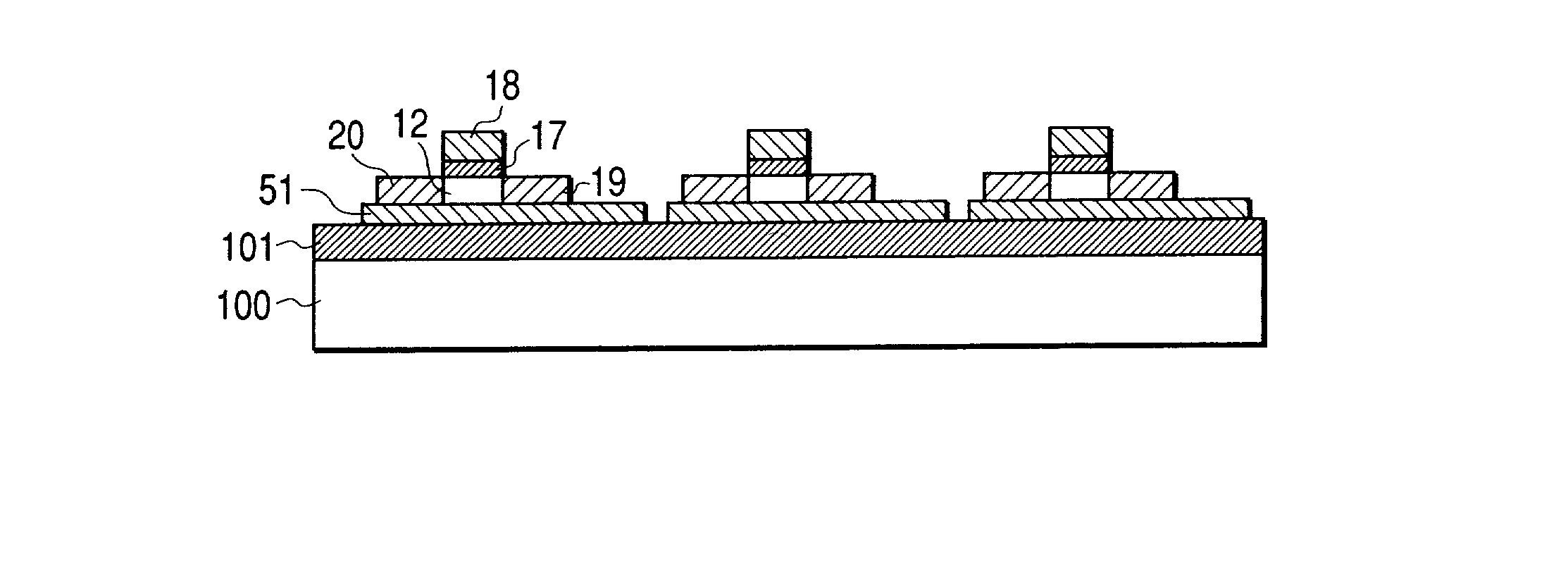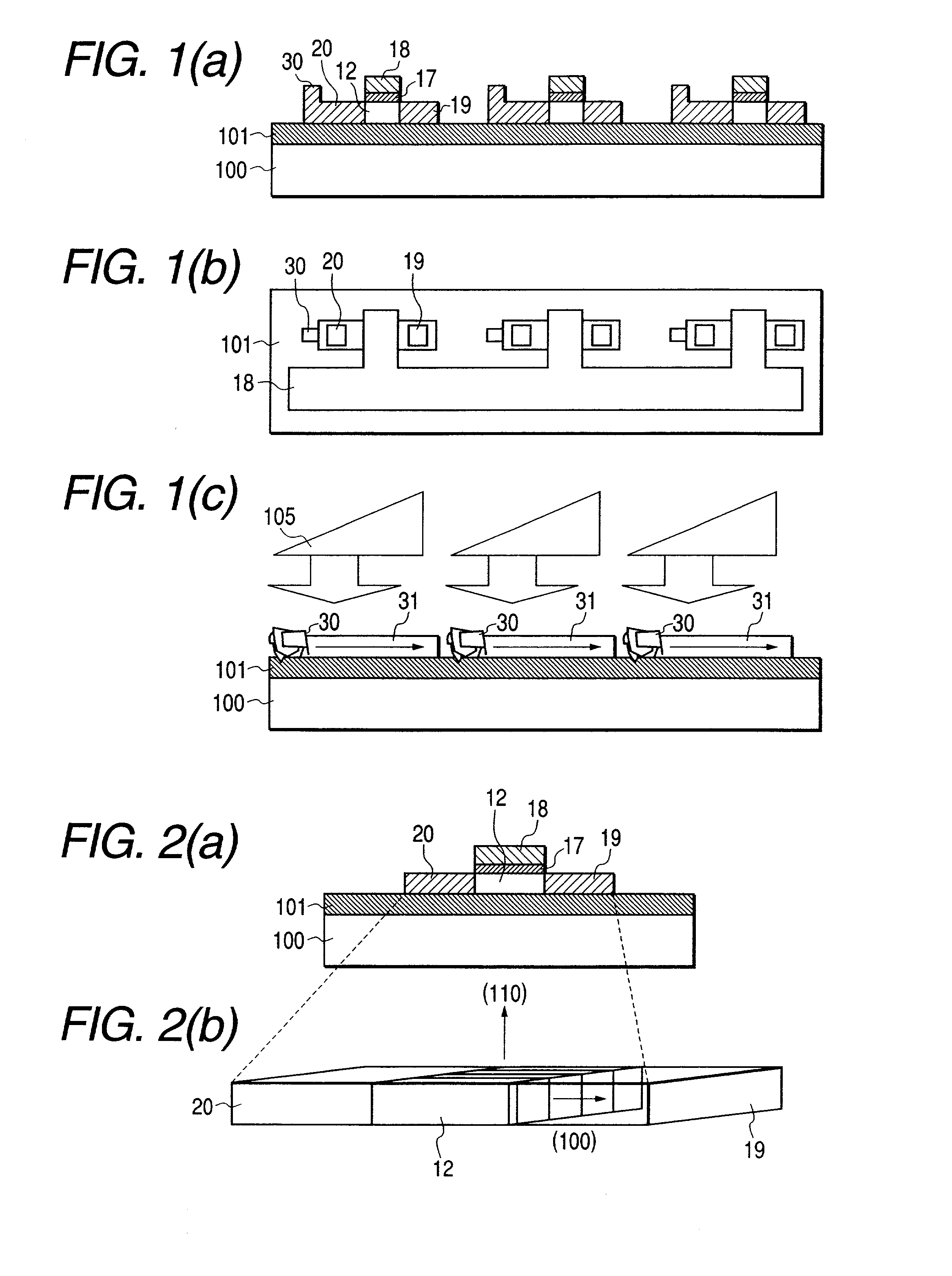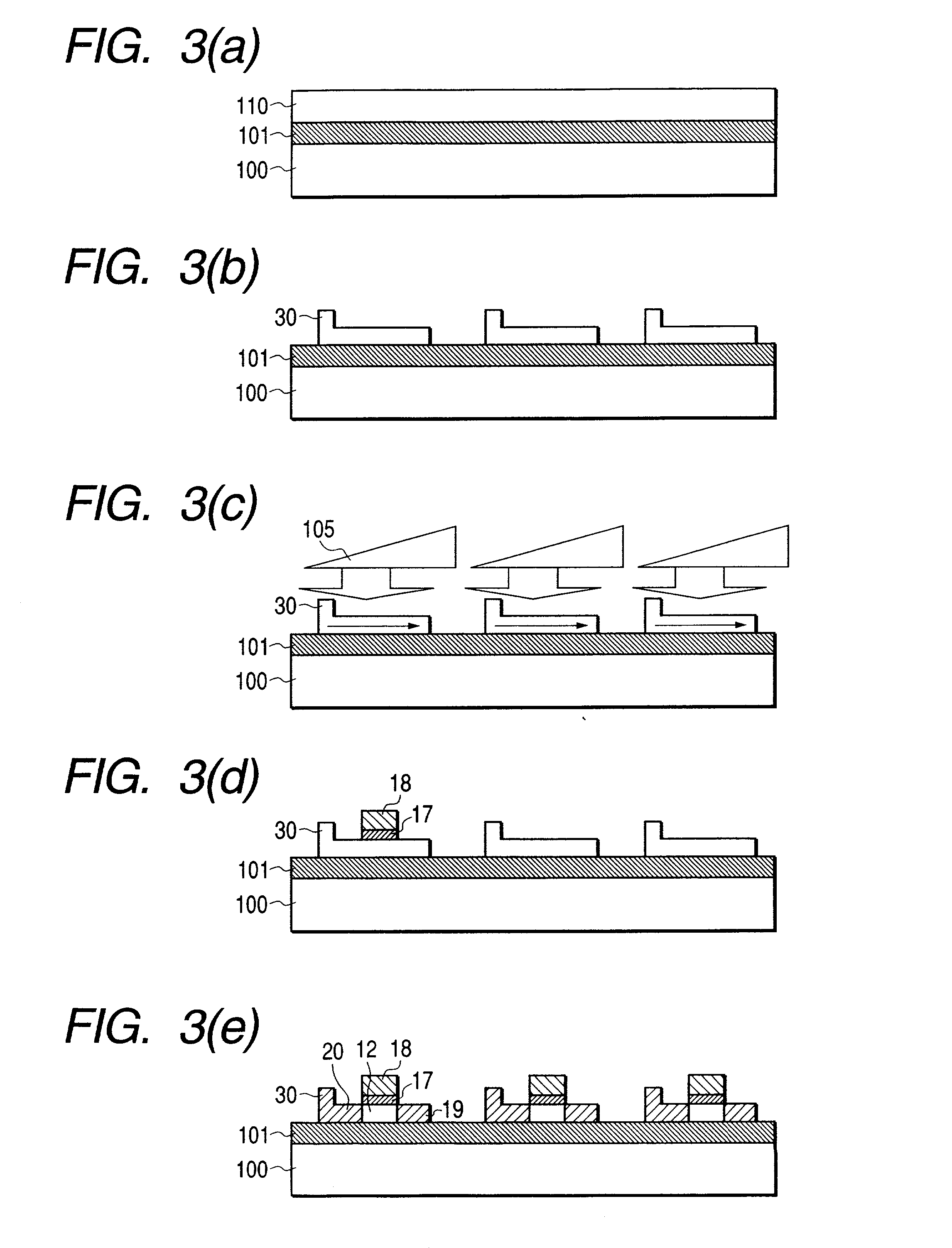Thin film semiconductor device, polycrystalline semiconductor thin film production process and production apparatus
a thin film semiconductor and production process technology, applied in the direction of crystal growth process, wing accessories, manufacturing tools, etc., can solve the problems of inability to grow polycrystalline silicon having a large grain size or control the grain size, difficult to improve the characteristic properties, reliability and uniformity of tft devices, and the grain size of polycrystalline silicon 103 is 0.5 .mu.m or less
- Summary
- Abstract
- Description
- Claims
- Application Information
AI Technical Summary
Benefits of technology
Problems solved by technology
Method used
Image
Examples
embodiment 1
[0077] FIGS. 1(a) to 1(c) are diagrams for explaining a thin film semiconductor device of the present invention. FIGS. 1(a) to 1(c) show the thin film semiconductor device having three polycrystalline silicon thin film transistors. FIG. 1(a) is a sectional view and FIG. 1(b) is a plan view of the thin film semiconductor device. In FIG. 1(a) and FIG. 1(b), reference numeral 100 denotes an insulating substrate, 101 underlying layer film, 18 gate electrode and 17 gate insulating film. A glass substrate is frequently used as the insulating substrate. A silicon dioxide (SiO.sub.2) film is generally used as the above underlying layer film.
[0078] Each silicon semiconductor layer comprises a channel region 12, a source region 20, a drain region 19 and a projecting crystal nucleus region 30. The channel region 12 is composed of a polycrystalline silicon film having a large grain size and the crystal nucleus region 30 is generally composed of a polycrystalline silicon film having a small gra...
embodiment 2
[0095] FIGS. 7(a) to 7(c) are diagrams for explaining a semiconductor device of the present invention. In this embodiment, a second semiconductor layer is formed below the semiconductor layer constituting a channel from the viewpoint of crystal growth. FIGS. 7(a) to 7(c) show three polycrystalline silicon thin film transistors mounted. FIG. 7(a) is a sectional view and FIG. 7(b) is a plan view of the semiconductor device. FIG. 7(c) is a sectional view for explaining a laser beam irradiation method.
[0096] In FIG. 7(a) and FIG. 7(b), reference numeral 100 denotes an insulating substrate, 101 underlying layer film, 18 gate electrode and 17 gate insulating film. A glass substrate is frequently used as the insulating substrate. A silicon dioxide film is generally used as the underlying layer film.
[0097] The first semiconductor layer has a channel region 12, source region 20 and drain region 19. The channel region 12 is composed of a polycrystalline silicon film having a large grain size...
embodiment 3
[0105] FIGS. 9(a) to 9(c) are diagrams for explaining a semiconductor device of the present invention. In this embodiment, a member which facilitates the partial radiation of heat during crystal growth is used.
[0106] FIGS. 9(a) to 9(c) show a semiconductor device having three polycrystalline silicon thin film transistors formed thereon. FIG. 9(a) is a sectional view and FIG. 9(b) is a plan view of the semiconductor device.
[0107] In FIGS. 9(a) and 9(b), reference numeral 100 denotes an insulating substrate, 101 underlying layer film, 19 gate electrode and 17 gate insulating film. The semiconductor layer is composed of a channel region 12, source region 20 and drain region 19, and the channel region 12 is composed of a polycrystalline silicon film having a large grain size. An insulating film 50 is selectively formed on the underlying layer film 101 between a plurality of semiconductor devices. The heat conductivity of the insulating film 50 is higher than the heat conductivity of th...
PUM
| Property | Measurement | Unit |
|---|---|---|
| length | aaaaa | aaaaa |
| width | aaaaa | aaaaa |
| internal tensile stress | aaaaa | aaaaa |
Abstract
Description
Claims
Application Information
 Login to View More
Login to View More - R&D
- Intellectual Property
- Life Sciences
- Materials
- Tech Scout
- Unparalleled Data Quality
- Higher Quality Content
- 60% Fewer Hallucinations
Browse by: Latest US Patents, China's latest patents, Technical Efficacy Thesaurus, Application Domain, Technology Topic, Popular Technical Reports.
© 2025 PatSnap. All rights reserved.Legal|Privacy policy|Modern Slavery Act Transparency Statement|Sitemap|About US| Contact US: help@patsnap.com



